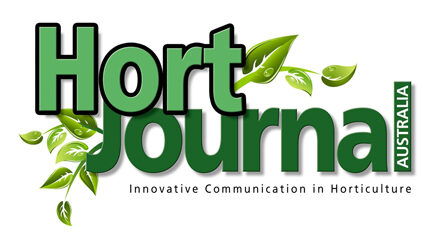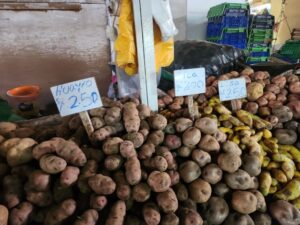
Potatoes by the hundreds!
By Clive Larkman
The Colombian Exchange resulted in many foods from the New World becoming common in European countries, including but not limited to the potato. Like so many Solanaceae, this humble vegetable is indigenous to the plains of the upper Andes and the lower regions of Machu Picchu and surrounds. It is believed to have been cultivated in Southern Peru and western Bolivia since 5000 BC.
The potato was a staple part of the pre-Inca diet and was one of the earliest cultivated vegetables in the world. It was both wild collected and farmed in South America. The Incas are known to have been active farmers and understood the concept of genetic variation due to differing climatic conditions. There are many examples of their trial beds with old seed beds from non-local plants. Even now the local Andean people still collect wild tubers for sale at local markets. There are over 3,500 to 4,000 varieties of potato across more than 150 species in the Peru region alone. Like so many of the world’s major food crops, the modern cultivars are very different from their wild parents.
The wild potato species are not very edible, nor are they very nutritious when compared with modern forms. The main forms grown around the world today are polyploid, with several tetraploid, triploid and even a pentaploid form available. As the plant moved around the world the number of varieties now available has exceeded 5,000. Most of them are forms of the classic plant, Solanum tuberosum.
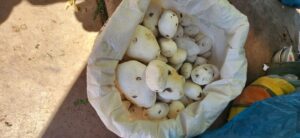
When the Spanish arrived in the Inca territories around 1540, they noticed the potato and how important it was to the local peoples. It must have had a major effect on the invaders as the vegetable started turning up in multiple texts and reports. At first it was referred to as an unusual truffle and several European nations compered them to underground apples. The French call them pomme de terre which means apple of the earth. The word ‘potato’ is thought to come from the Spanish word patata which in turn is an amalgamation of two South American words; Taino word batata and the Quechua word papa.
There is much debate as to exactly how and when potatoes moved from South America to Europe. This movement is known to have occurred in the mid to late sixteenth century when there were numerous boats sailing between the New World and the Old World (i.e. Europe). Some say the potato came via Spanish galleons returning with loads of stolen gold and silver. These ships ferried this vegetable back to kitchens of Europe, whilst their sailors were fed with it on their long journey home. Potatoes are thought to have made their way via the Canary Islands to Ireland, where they became the staple food of poor villagers.
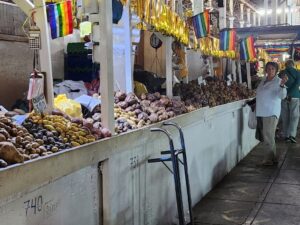
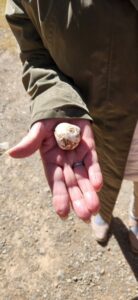
There is also the story of the English privateer Sir Francis Drake, or the explorer Sir Walter Raleigh, bringing the potato back to the upper-class kitchens of England. The anecdote goes that one of these men gave the potato to their London cooks who cooked and served the whole plants. Having poisonous foliage and stems, the potato of course made the gentry quite sick. This poisoning, plus the fact that the potato looked like the Deadly Nightshade, made many Europeans nervous about this new plant. However, the ease with which it grew, its ease of harvest, and its good nutrition and pleasant flavour meant that within 100 years, the potato had become a major food crop for western Europe.
Of course, like other plants from the New World, the potato quickly spread through the rest of Europe, Africa, the Middle East and right across Asia. By the late twentieth century, there would not have been a country that did not grow, harvest and eat potatoes. Some also created alcoholic beverages from the potato, e.g., vodka. The advent of deep frying and junk food meant that the humble potato has now become a major side to so many dishes. Almost all simple pub type menus in Australia now come with ‘chips and salad’ or ‘veggies and mash’.
Interestingly, potatoes are still a popular and major food in Peru and other Latin American countries. A visit to a local market will find stalls with dozens of different potatoes. In Chile, a very popular street food is chorrillana, which is a very large plate of chips, accompanied by sauteed beef and onions then topped with two or three fried eggs. Having just returned from Santiago, I can vouch that this dish is as common as ‘parma and chips’, However, in my opinion, it is not a particularly pleasant food.
One fascinating form of storing and treating potatoes is dehydrating them using a method dating back over 1,000 years. All the markets around Cusco and Machu Picchu sell this weird form of potato. When first examined, it looks like a piece of dried stone. It is incredibly light and looks nothing like a potato. They are referred to as moraya and were once a key food for survival. Once dried, the moraya had a shelf life of many years which was a great backup for the local people in a bad season. They were light, nutritious and easy to rehydrate making them an amazing food source for travelling armies. They are now part of the local diet and are used by top level local chefs as a delicacy.

The system to dehydrate moraya is quite simple and uses the very cold, dry climate of the upper Andes. Cusco is a large town of 750,000 people at 3,400 metres above sea level. Much of the year is very dry here and the mornings can be quite cold. The potatoes are left outside overnight to freeze in these high altitudes where temperatures drop below freezing at night. The moraya are then left to dry in the sun’s heat during the day. The air is very dry which causes these potatoes to shrink and lose moisture. The white moraya or chuño is finished by washing and peeling the potatoes after the initial freeze-drying process.
The humble potato has an amazing place in the history of human civilisation and travel. The next time you bite into your ‘steak and chips’ at your corner pub, imagine what the world would look like without it!
